HMS Queen Elizabeth: Video shows British F-35 pilot carrying out '˜revolutionary' first rolling landing on £3bn carrier'‹'‹'‹'‹'‹'‹'‹'‹'‹'‹'‹'‹'‹'‹'‹'‹'‹'‹'‹'‹'‹'‹'‹'‹'‹'‹'‹'‹'‹'‹'‹'‹'‹'‹'‹'‹'‹'‹'‹'‹'‹'‹'‹'‹'‹'‹'‹'‹'‹'‹'‹'‹'‹'‹'‹'‹'‹'‹'‹'‹'‹'‹'‹'‹'‹'‹'‹'‹'‹'‹'‹'‹'‹'‹'‹'‹'‹'‹'‹'‹'‹'‹'‹'‹'‹'‹'‹'‹'‹'‹'‹'‹'‹'‹'‹'‹'‹'‹'‹'‹'‹'‹'‹'‹'‹'‹'‹'‹'‹'‹'‹'‹'‹'‹'‹'‹'‹'‹'‹'‹'‹'‹'‹'‹'‹'‹'‹'‹'‹'‹'‹'‹'‹'‹'‹'‹'‹'‹'‹'‹'‹'‹'‹'‹'‹'‹'‹'‹'‹'‹'‹'‹'‹'‹'‹'‹'‹'‹'‹'‹'‹'‹'‹'‹'‹'‹'‹'‹'‹'‹'‹'‹'‹'‹'‹'‹'‹'‹'‹'‹'‹'‹'‹'‹'‹'‹'‹'‹'‹'‹'‹'‹'‹'‹'‹'‹'‹'‹'‹'‹'‹'‹'‹'‹'‹'‹'‹'‹'‹'‹'‹'‹'‹'‹'‹'‹'‹'‹'‹'‹'‹'‹'‹'‹'‹'‹'‹'‹'‹'‹'‹'‹'‹'‹'‹'‹'‹'‹'‹'‹'‹'‹'‹'‹'‹'‹'‹'‹'‹'‹'‹'‹'‹'‹'‹'‹'‹'‹'‹'‹'‹'‹'‹'‹'‹'‹'‹'‹'‹'‹'‹'‹'‹'‹'‹'‹'‹'‹'‹'‹'‹'‹'‹'‹'‹'‹'‹'‹'‹'‹'‹'‹'‹'‹'‹'‹'‹'‹'‹'‹'‹'‹'‹'‹'‹'‹'‹'‹'‹'‹'‹'‹'‹'‹'‹'‹'‹'‹'‹'‹'‹'‹'‹'‹'‹'‹'‹'‹'‹'‹'‹'‹'‹'‹'‹'‹'‹'‹'‹'‹'‹'‹'‹'‹'‹'‹'‹'‹'‹'‹'‹'‹'‹'‹'‹'‹'‹'‹'‹'‹'‹'‹'‹'‹'‹'‹'‹'‹'‹'‹'‹'‹'‹'‹'‹'‹'‹'‹'‹'‹'‹'‹'‹'‹'‹'‹'‹'‹'‹'‹'‹'‹'‹'‹'‹'‹'‹'‹'‹'‹'‹'‹'‹'‹'‹'‹'‹'‹'‹'‹'‹'‹'‹'‹'‹'‹'‹'‹'‹'‹'‹'‹'‹'‹'‹'‹'‹'‹'‹'‹'‹'‹'‹'‹'‹'‹'‹'‹'‹'‹'‹'‹'‹'‹'‹'‹'‹'‹'‹'‹'‹'‹'‹'‹'‹
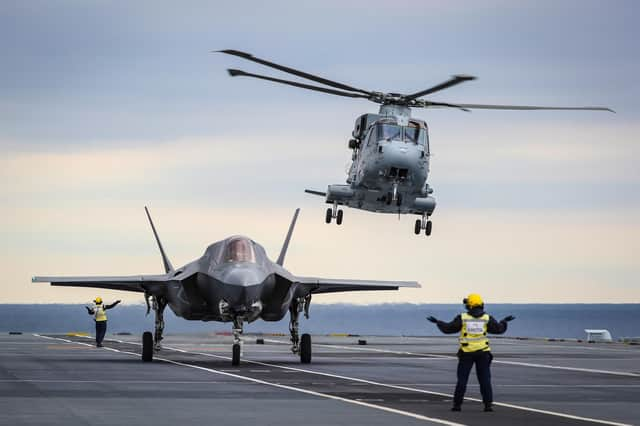

F-35 Lightning fighter jet pilot Peter Wilson completed the first ever shipborne rolling vertical landing on the £3bn aircraft carrier (SRVL) this weekend.
Previously the jets have conducted only vertical landings, hovering by the side of the warship before moving sideways over its deck and gently lowering down.
Advertisement
Hide AdAdvertisement
Hide AdA rolling landing however requires an F-35Â to take a more conventional landing approach, approaching the ship from behind at speed, before using thrust from its nozzle and lift created by air over the wings to touch down and gently come to a stop.
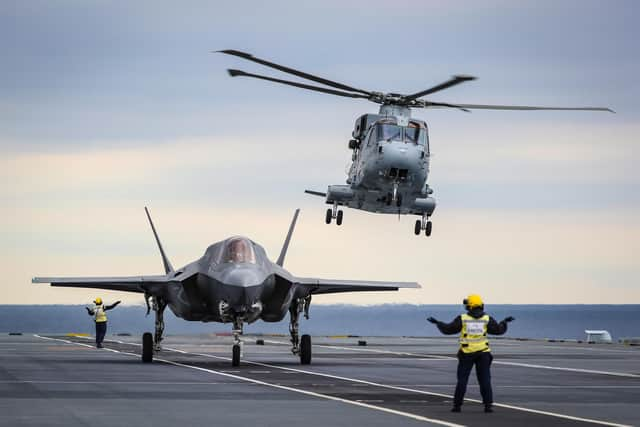

The UK is the only nation currently planning to use the manoeuvre, which will allow jets to land on board the carrier with heavier loads '“ meaning they will not need to jettison expensive fuel and weapons before landing.
Peter Wilson, a test pilot from BAE Systems, said: '˜I'm excited and thrilled to have achieved this.
'˜I've worked on this for the past 17 years and it's fantastic to know that it's matched the modelling and simulation we have done over the years.
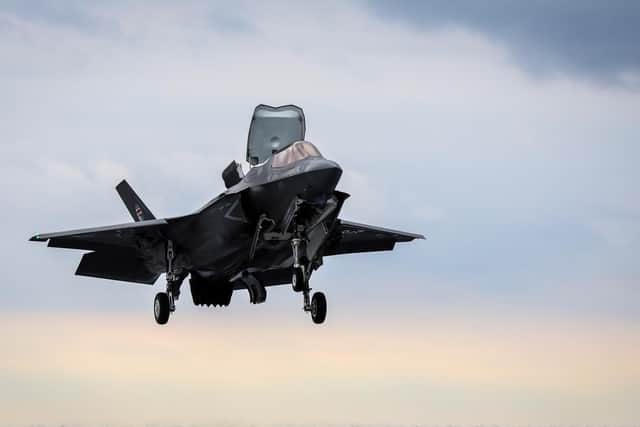

Advertisement
Hide AdAdvertisement
Hide Ad'˜I've flown more than 2,000 SRVLs in the simulator and am honoured to have been able to do the first one on board HMS Queen Elizabeth.'
In the HMS Queen Elizabeth's '˜packed but eerily silent' flying control centre, it was Royal Navy lieutenant and landing safety officer Christopher Mould who gave the historic SVRL the go-ahead '“ seconds before the F-35 jet carrying Mr Wilson touched down.Â
'˜It was a pretty intense experience. It's the first time we've ever done it,' he said.Â
'˜As the independent checker, I have to make sure that what we are seeing in the flying control centre is also what the pilot is seeing and call it as I see it.'
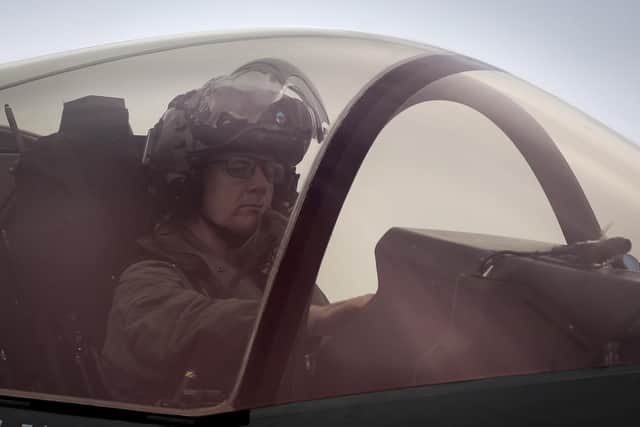

Advertisement
Hide AdAdvertisement
Hide AdAnother test pilot on board was Major Michael Lippert, of the US Marine Corps (USMC) '“Â who said America was watching this part of the trials on board Britain's carrier particularly closely.
The USMC, which also flies the F-35B variant used by HMS Queen Elizabeth, will join the ship when she deploys operationally for the first time in 2021.
Maj Lippert said: '˜This is one of the main reasons we are here. It is of interest to the service at large and we are learning from each other.
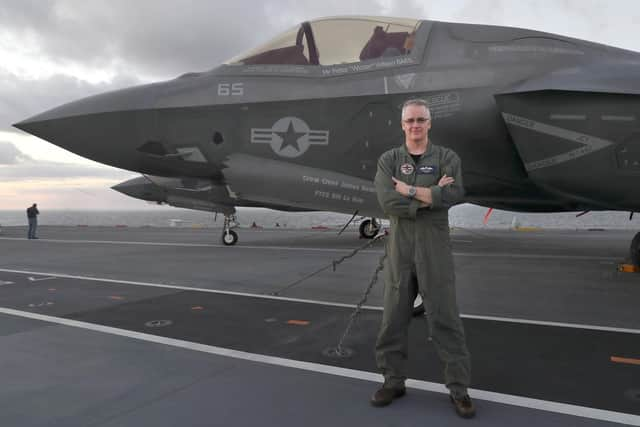

'˜I will have the honour of conducting the first SRVL at sea for the US military so I'm excited. It's what we all join up for '“ this is truly experimental test flying.'
Advertisement
Hide AdAdvertisement
Hide AdCommander James Blackmore, the commander air on board HMS Queen Elizabeth '“ also known as '˜Wings' '“ said: '˜This is the first step in proving this capability and another milestone in aviation for the Royal Navy.
'˜It's fantastic to have achieved this '“ it was textbook and just what we expected.'
Squadron Leader Andy Edgell RAF, the lead test pilot for the flying trials programme, added the SVRL was a '˜moment in history being made for Royal Navy aviation'.
HMS Queen Elizabeth is continuing her flying trials, on a deployment called Westlant 18, along with her escort ships HMS Monmouth and US destroyer USS Lassen.
Advertisement
Hide AdAdvertisement
Hide AdShe left Portsmouth in August, crossing the Atlantic with embarked Merlin Mk2 anti-submarine helicopters from 820 Naval Air Squadron at RNAS Culdrose and Merlin Mk4 helicopters from 845 Naval Air Squadron at RNAS Yeovilton.
More than 1,400 sailors, flight crew and Royal Marines have been working on board the carrier during her deployment.
As previously reported, the Royal Navy's two new aircraft carriers, HMS Queen Elizabeth and HMS Prince of Wales, will project British military power across the globe for the next half a century.
Advertisement
Hide AdAdvertisement
Hide AdConstruction work continues on board HMS Prince of Wales, the second aircraft carrier in the class, which is nearing completion at the Rosyth shipbuilding yard.
The pair will be used to provide humanitarian assistance and disaster relief, strengthen defence relationships with Britain's allies, and support British armed forces deployed around the world.
In recent operations, US aircraft carriers including the USS George HW Bush and USS Harry S Truman '“ with the latter visiting Portsmouth last week '“ have played a central role in the Gulf and Mediterranean, conducting strikes against Daesh in Iraq and Syria.
The Royal Navy has said HMS Queen Elizabeth is '˜on track to deploy' on global operations from 2021.
Meanwhile, the UK has now taken delivery of 16 out of a planned 138 F-35 jets as part of its world-leading fleet of military aircraft for use by the Royal Navy and Royal Air Force.
